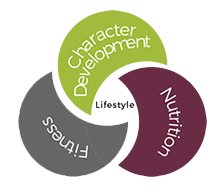Fall back into workouts without falling apart September 7, 2004
Press-Enterprise
 Prevention For Life : Fall back into workouts without falling apart
Prevention For Life : Fall back into workouts without falling apart
“New and returning people are encouraged to take it slow. Whether we’re 40, 50 or older, we all like to think we can boost our heart rates and fling ourselves around the same way we did in our 20s. But time always takes its toll on the body,” said Riverside personal trainer, Karla Adams. “Muscles, tendons, joints, backs and bones can’t take quite the same stresses that we put on them in our youth,” said Adams, a competitive distance runner. “Most people not used to exercising who just tear it up for a week may wind up spending the next two weeks recovering,” she said in a phone interview. “Injury from overdoing it is the No. 1 reason people quit after four to six months.” “So it’s crucial to tailor a balanced aerobics program that matches each person’s lifestyle,” said Lucinda Eggert, former walking coach for the Loma Linda Lopers. “The most important thing is that it’s fun,” Eggert said. Here are some exercise guidelines from Adams, Eggert and Christine Timms, the Lopers’ current walking coordinator: Don’t harm your body. Adams agrees with Charley Goldman, legendary trainer of heavyweight boxing champ Rocky Marciano. Nearly half a century ago, the trainer told his students to “Learn the difference between a good workout and hurting yourself.” These days, Goldman’s advice applies to athletes of all ages. It contradicts the popular, sometimes destructive, exercise mantra: “No pain, no gain.” If an activity or movement hurts, avoid or alter it. If your feet, ankles or knees ache after jogging on pavement, try something softer – such as beach sand or a dirt trail. Get medical clearance. High-impact
activities like jogging can help prevent bone loss – and even build bone density – as you get older, recent studies have found. Researchers say it’s key to find the highest level of impact that your body can safely tolerate. Your doctor and personal trainer can help in this matter. However, if you’re a senior, overweight, out of shape or have a history of chronic problems with joints, the lower back, hip, knee, ankle or foot, get your physician’s approval before taking up tennis, racquetball, running, kickboxing, jumping jacks and other high-impact activities. Reduce jarring forces. Even older people with osteoporosis and joint problems can safely benefit from low-impact, moderate weight-bearing exercises such as race-walking, intermittent walking/jogging, ballroom dancing, yoga, swimming aerobics and resistance training.
You also can try zero-impact workouts on elliptical machines or cross-trainers that combine the motions of treadmills, stair climbers, ski machines and exercise bikes. “They can simulate the intensity and motion of running and really get the heart rate up,” Adams said. Cross-training by alternating between various exercises can reduce the risk of repetitive strain injuries, help make fitness less boring and keep your body challenged. “Include strength training in the mix,” Eggert advised. “This is so important because we all lose muscle as we age,” she said. Machines, bands, weights or any other activity that makes your muscles pull, push or lift against resistance can help you build and maintain bones and muscles. Hire a trainer. If you’re a beginner, a personal trainer can help you figure out your nutritional and fitness status and set realistic goals. Make sure to choose someone certified, up-to-date about medicine and fitness, and knowledgeable about your age group. You also can join an aerobics class where an instructor can give you tips,
or you can educate yourself by reading fitness books, magazines and Web sites. Build up gradually. Beginners should ease into exercise and be patient about seeing the benefits of a consistent fitness regimen. Starters should have three workouts a week, each lasting 30 to 60 minutes. Likewise, eventually increase the intensity of your workouts. Moderate walking and swimming, for example, will help build stamina and confidence without straining your body during the first phase. Wear comfortable shoes. It’s crucial to protect ankles, shins and feet. You need shoes that cushion and stabilize feet.Adams advises getting fitted at specialized sports stores where employees watch you walk or jog in the footwear. Because feet expand, she suggests getting shoes that are half a size to a full size larger than your feet.



